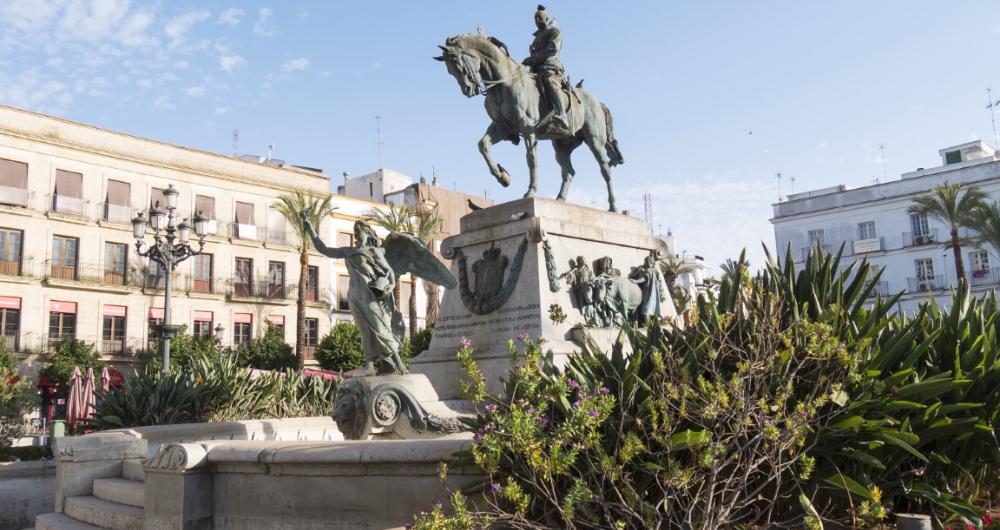In This Article
Looking for flamenco rhythms, world-famous sherry, and Andalusian charm? Head to Jerez de la Frontera! Located in southern Spain’s Cádiz province, Jerez is the birthplace of flamenco, home to historic bodegas, and rich with Moorish and Spanish traditions. Whether you're sipping sherry in a centuries-old winery, watching a horse ballet, or wandering sun-drenched plazas, Jerez delivers elegance and authentic Andalusian spirit.
Jerez de la Frontera Highlights:
- For Wine Lovers: Tour the sherry bodegas – Visit González Byass (Tío Pepe), Bodegas Tradición, or Lustau to explore cellars and taste iconic Spanish sherry wines.
- For Culture Seekers: Experience authentic flamenco – Catch a passionate performance at Peña Flamenca or during the annual Festival de Jerez.
- For Horse Enthusiasts: Visit the Royal Andalusian School of Equestrian Art – Marvel at equestrian ballet with purebred Andalusian horses and elegant riders.
- For History Buffs: Explore the Alcázar of Jerez – A Moorish fortress with gardens, Arab baths, and panoramic views of the city.
- For Strollers: Wander Plaza del Arenal – Relax in the city's central square surrounded by palm trees, cafés, and lively atmosphere.
🌤 When I like to visit Jerez de la Frontera
The best time to visit Jerez is in spring (April–June) or fall (September–October). Spring brings vibrant festivals, including the Feria del Caballo (Horse Fair) and mild temperatures perfect for sightseeing. Summers are hot but festive, while winters are quiet and pleasant with fewer tourists.
🗺 My tips for getting to Jerez de la Frontera
- By Air: Jerez Airport (XRY) is just 15 minutes from the city center with domestic and some European flights.
- By Train: Renfe runs frequent trains from Seville, Cádiz, and Madrid. The Jerez train station is walkable to the city center.
- By Car: Jerez is well-connected via the AP-4 and A-4 highways and makes a great base for exploring Andalusia.
🏬 Where I like to stay in Jerez de la Frontera
- Recommended for Couples: Hotel Casa Palacio María Luisa – A luxurious boutique hotel in a historic mansion with elegant rooms and a courtyard pool.
- For Culture Lovers: Hotel Bodega Tío Pepe – Stay in the heart of sherry country with views of the cathedral and direct access to bodegas.
- For Budget Travelers: Itaca Hotel Jerez – A charming former convent turned into a stylish and affordable hotel in the old town.
😍 Best Things to Do in Jerez de la Frontera
1. For Architecture Lovers: Alcazar
♥
"Explore Moorish architecture and climb towers on an exciting historical sightseeing trip."

© max8xam/stock.adobe.com
This Moorish castle was constructed during the period of Muslim rule and is the last remaining mosque of the 18 built. It was situated on the highest point of the ancient city as a defensive fort. The perimeter walls, an octagonal tower and baths remain. The Islamic gardens have a formal layout and feature fountains. The mosque was converted into a chapel in 1264 and a palace was added in the 17th and 18th centuries. The Alcazar is the oldest monument in the city and is open year round. Visitors can climb the tower and walk along the ramparts which offer sweeping views of the city.
Alcazar, Calle Alameda Vieja, s/n, 11403 Jerez de la Frontera
2. For Spiritual Travelers: Cathedral - San Salvador
💕
"Admire soaring ceilings and view religious art during a peaceful cultural visit."

© Mik Man/stock.adobe.com
The building which has been Jerez's cathedral since 1980 took more than 80 years to build, from 1695 to 1778. Consequently, a number of architectural concepts were incorporated in the design. It has Gothic flying buttresses and gargoyles, a Baroque facade and a Renaissance dome. The collegiate church was built on the site of a former mosque and one of the minarets has remained as a tower. The exterior and interior have neoclassical elements with several statues and tableaux adorning the walls. It is the seat of the Diocese of Asidonia-Jerez and was declared a Property of Cultural Interest in 1931.
Cathedral - San Salvador, Plaza Encarnación, s/n, 11403 Jerez de la Frontera, Phone: +34-956-16-90-59
3. For Equestrian Fans: The Dancing Horses
😊
"Watch elegant equestrian performances and experience tradition on a unique spring outing."
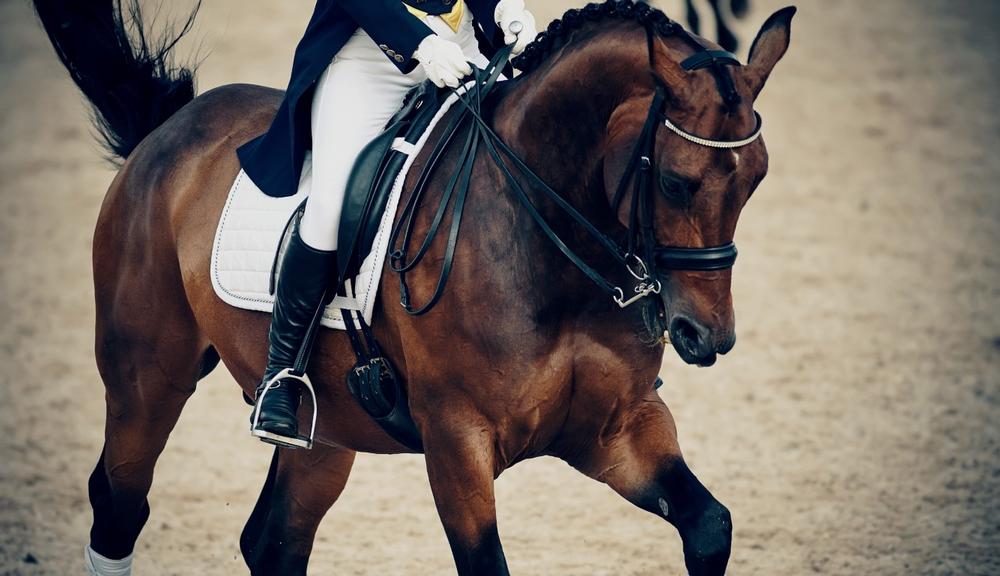
© Azaliya (Elya Vatel)/stock.adobe.com
The Royal Andalusian School of Equestrian Art Foundation is world renowned for its show, 'How the Andalusian Horses Dance'. The show was instituted to celebrate the recognition given to the organization by King Juan Carlos I in 1973. In 1986 the school acquired 35 purebred Spanish horses and 19 horse-drawn carriages, along with harnesses, saddles and embroidered costumes dating back to the 1730s. The show is performed several times a week in the arena which seats 1600. The museum features antiquities alongside state-of-the-art interactive displays on the school's history and aims.
Avenida Duque de Abrantes, S/N. Palacio Recreo de las Cadenas.
11407. Jerez de la Frontera, Phone: +34-956-92-25-80
Attractions for Couples
4. For Couples: Tio Pepe Bodegas
♥
"Tour iconic cellars and savor sherry tastings on a romantic wine trip."

© traveldia/stock.adobe.com
Early in the 19th century, when the wine industry in the region was at its zenith, Manuel Gonzalez started a small winery. Within 20 years, his enterprise grew to be the leading exporter of sherry. He built the first bodegas or wine storage facilities and left behind an architectural legacy. The winery offers guided tours in English, Spanish and German. There are a range of tour packages to choose from beginning with the basic tasting of between 2-4 wines or sherries. There are also brandy tours, bicycle and 4 X 4 routes, and a choice of lunch, dinner or tapas tastings.
Tio Pepe Bodegas
, Calle de Manuel María González, 12, 11403 Jerez de la Frontera, Phone: +34-956-35-70-16
5. For Sherry Connoisseurs: Bodegas Tradicion
My top 5 😎 :
"View fine art and sample aged sherries during an unusual cultural experience."
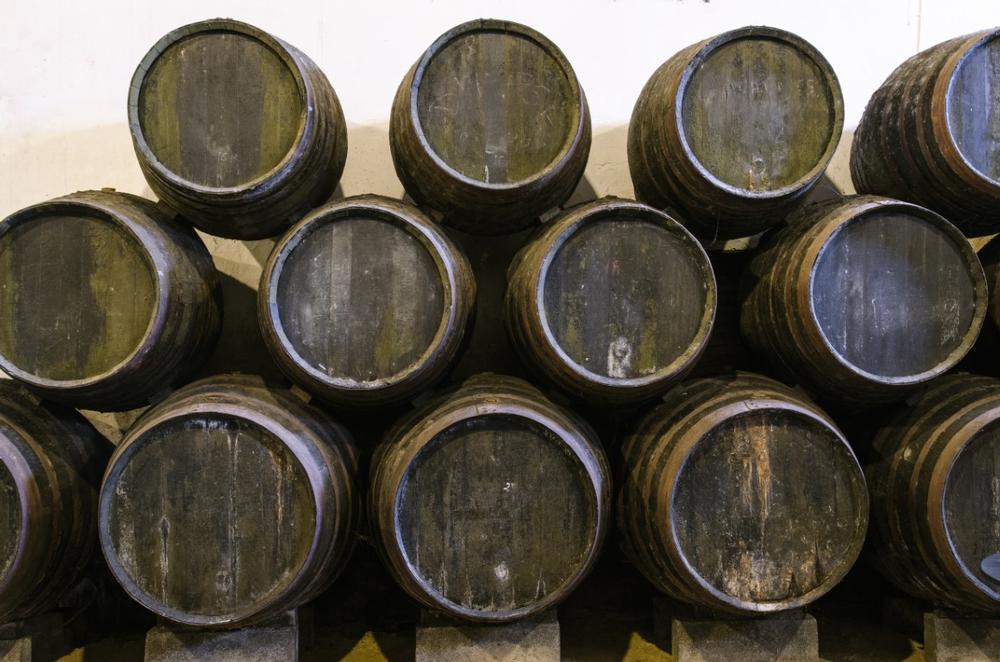
© KikoStock/stock.adobe.com
The concept of tradition is of utmost importance to this winery. It was founded in 1998 by Joaquim Rivero whose family owned the oldest sherry house in the region. Traditional techniques, using only natural fermentation processes, are used to age the wine. An old sherry warehouse was acquired and refurbished as a cellar. It is open for viewing by appointment. The private art gallery of 300 Spanish artworks from the 15th to the 20th century is housed in the cellar. The winery produces 1500 casks per annum, enough for 20000 bottles of wine, most of which is exported.
Bodegas Tradicion, Plaza Cordobeses, 3, 11408 - Jerez de la Frontera, Phone: +34-956-16-86-28
6. For Foodies: Lustau
♥
"Taste premium sherries and explore historic bodegas on an affordable wine-lover’s adventure."
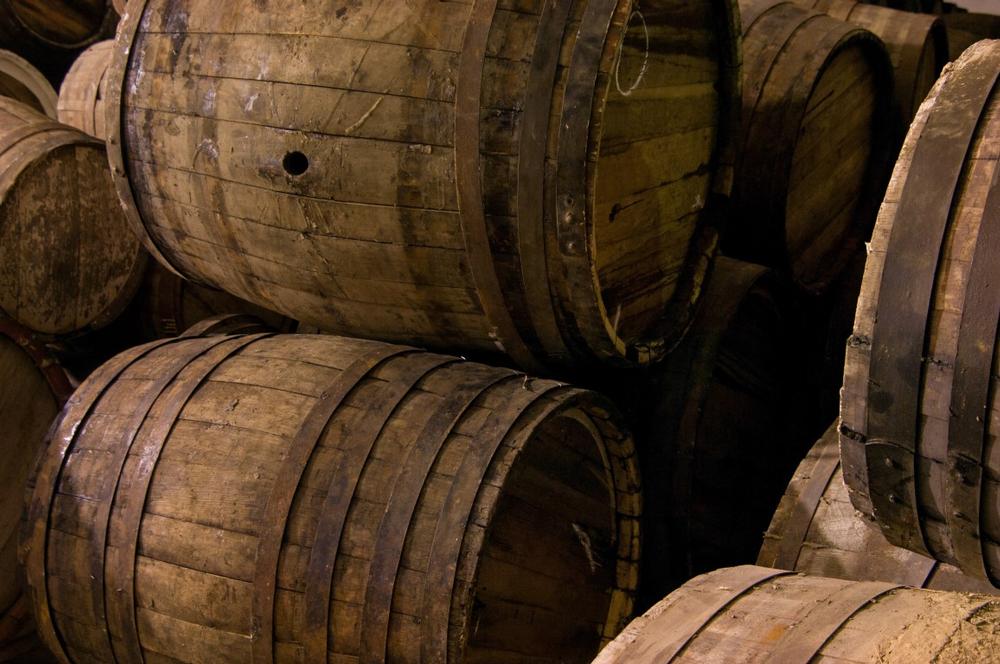
© warloka79/stock.adobe.com
This winery started producing wines for sherry producers in 1886. In 1945, under the leadership of Emitio Lustau Ortega, the son-in-law of the founder, first produced sherries under the Lustau label. In 1950, the company started exporting sherries and has subsequently been awarded several medals and trophies for their products. In 1990, the company merged with Luis Caballero and later renovated six bodegas in the center of the city. They have vineyards in three areas of the sherry region and produce wine, sherry, brandy and vinegar. They offer tastings, with explanations in English and Spanish.
Lustau
, Calle Arcos, 53, 11402 Jerez De La Frontera, Cádiz, Phone: +34-956-34-15-97
What to do if you are traveling with kids:
7. For Culture Observers: Bullring
💕
"Visit the historic arena and learn local traditions during a quick sightseeing stop."
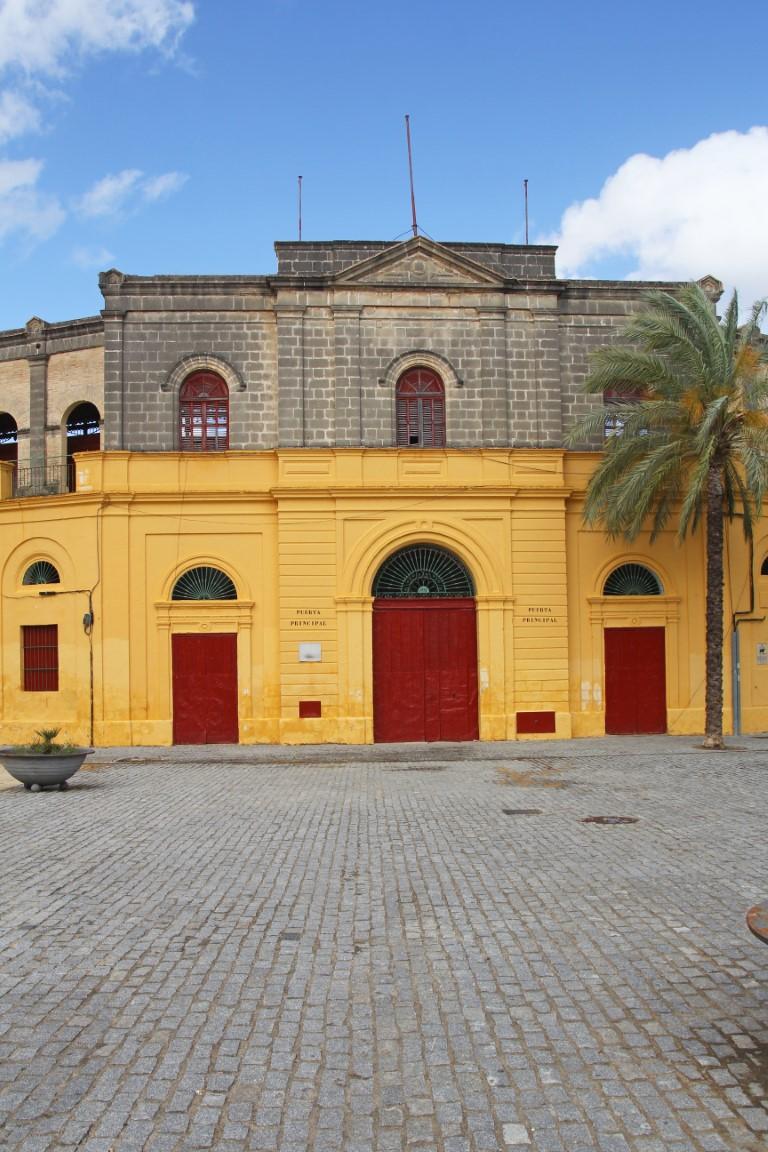
© chrupka/stock.adobe.com
The Plaza del Toros de Jerez is one of the oldest and most famous bullrings in Andalusia. It was first built in 1839 as a 16-sided wooden structure with seating for 11000 spectators. Unfortunately, it burnt down in 1860. It took 12 years to reconstruct but was burnt again in 1891. The current arena was built in 1894 and has an eclectic mix of styles resulting from its history. There are regular bullfights on the program and the plaza is also used for livestock contests and, until recently, the annual Horse Fair was held there.
8. For Festival-Goers: Feria Del Caballo
💕
"Dance at colorful casetas and admire horse parades during an exciting summer festival."
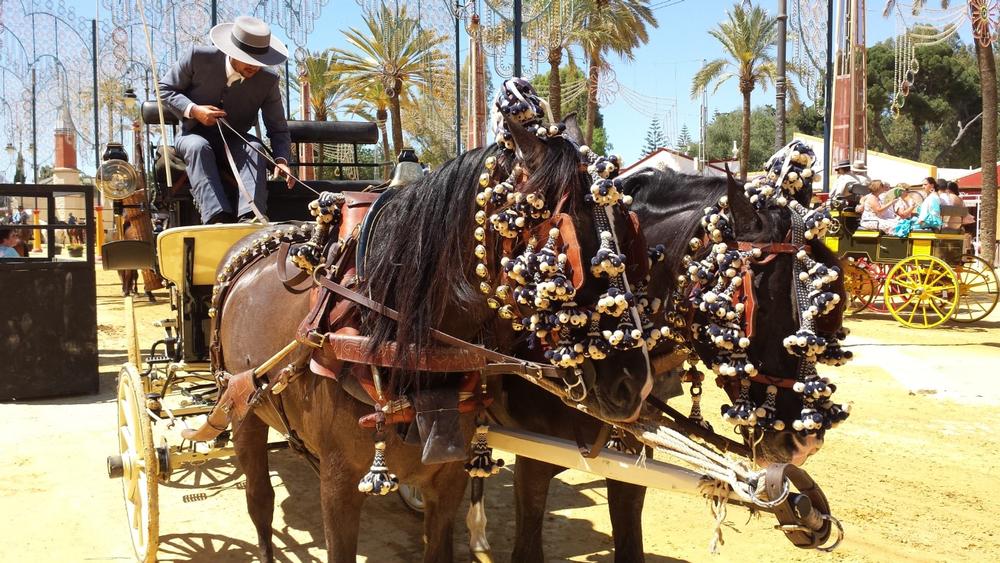
© lo2/stock.adobe.com
The annual, week-long Feria Del Caballo Horse Fair has been held in May in Jerez since 1983. Hundreds of men, women and children dress in traditional costumes and parade their purebred Spanish horses through the streets and into the González Hontoria fairground. The men wear black suits with short jackets or boleros and flat broad-rimmed hats. The women wear brightly colored, flamenco or gypsy dresses and carry fans. Several marquees are erected on the grounds and local food and beverages are served. Bullfights are scheduled at the bullring during the festivities and at night the fairground turns into an amusement park.
9. For Tapas Fans: Tabanco El Pasaje
I Recommend 🎈 :
"Sip local sherry and enjoy live flamenco on a fun evening trip."
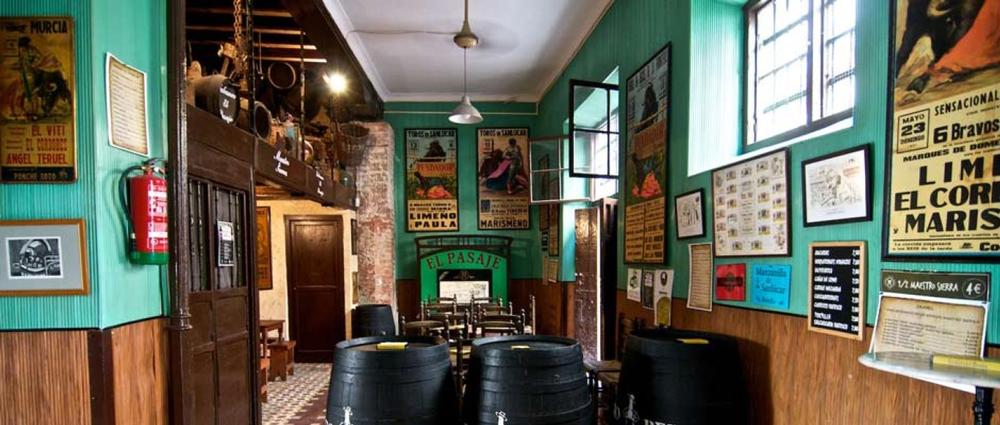
© Tabanco El Pasaje
Tabanco is a term originating from the 17th and 18th century. It means a small shop that sells tobacco. In modern times the term has come to be associated with sherry bars. The Tabanco El Pasaje is so named because its two entrances form a passage. Wines and sherries from local wineries are served. Tapas are on the menu, paired with wines poured straight from the barrel. A smoked fish dish is the specialty of the house. Flamenco shows are featured daily and entrance is free. This sherry bar is on the Tabanco Route.
🥗 Where I Like to Eat in Jerez de la Frontera
- Recommended for Tapas: Albores – Modern Spanish cuisine with creative tapas and sherry pairings on a lively pedestrian street.
- For Local Flavors: La Cruz Blanca – A beloved local spot for seafood, croquetas, and Andalusian classics.
- For Fine Dining: Mantúa – Michelin-starred restaurant offering a refined, seasonal tasting menu rooted in Andalusian terroir.
🎟 My favorite local events:
- For Horse Lovers: Feria del Caballo (May) – A weeklong celebration of horses, flamenco, food, and vibrant Andalusian culture.
- For Music Fans: Festival Internacional de Flamenco (Feb–Mar) – World-class flamenco shows in theaters, tablaos, and plazas across the city.
- For Wine Aficionados: Fiesta de la Vendimia (September) – Grape harvest celebrations with wine tastings, bodega tours, and Andalusian culture.
Day Trip Itineraries Within 30–60 Minutes of Jerez:
- For Beach Lovers: Cádiz (30 min) – Golden beaches, tapas bars, and ancient streets in Spain’s oldest city.
- For White Villages: Arcos de la Frontera (35 min) – Perched on a cliff, this pueblo blanco offers breathtaking views and historic charm.
- For Wine Country: Sanlúcar de Barrameda (45 min) – Visit manzanilla bodegas and enjoy fresh seafood on the riverfront.
- For Urban Exploration: Seville (1 hr) – Discover Moorish palaces, flamenco, and vibrant tapas culture in the Andalusian capital.
- For Nature: Doñana National Park (1 hr) – Explore wetlands, dunes, and bird sanctuaries in one of Europe’s most biodiverse regions.
📔 I get asked this a lot so I decided to include it:
-
Where is Jerez located?
-
Jerez is situated in the Province of Cadiz, in the autonomous region of Andalusia, in southwestern Spain.
-
What is the geography of Jerez?
-
The fertile and semi-rural municipality is located halfway between the Cadiz Mountains and the Atlantic Coast.
-
What are the main economic activities in Jerez?
-
Major economic activities include cattle ranching, horse breeding, and wine making.
-
What cultural attractions is Jerez known for?
-
The city is renowned for the annual Feria Horse Festival, Flamenco dancing, and its famous sherry bars.
At a Glance:
| Best Time to Visit |
Places to Stay |
Tips for Visiting |
| Spring (March-May) – Pleasant temperatures, ideal for exploring vineyards and cultural sites. |
Hotel Bodega Tío Pepe – A boutique hotel with wine-inspired elegance. |
Visit the Royal Andalusian School of Equestrian Art – Watch a mesmerizing horse show. |
| Summer (June-August) – Hot but lively, great for festivals and flamenco performances. |
Hotel Casa Palacio María Luisa – Luxurious accommodations in a historic setting. |
Experience the Feria del Caballo – Enjoy horse parades, flamenco, and local sherry. |
| Fall (September-November) – Mild weather, perfect for sightseeing and wine tastings. |
Hipotels Sherry Park – Comfortable hotel with a garden and pool. |
Tour the sherry bodegas – Taste world-renowned wines at Bodegas González Byass or Lustau. |
| Winter (December-February) – Cooler and less crowded, great for cozy cultural experiences. |
Itaca Hotel Jerez – A charming hotel in a restored 19th-century convent. |
Explore Alcázar of Jerez – Visit the historic Moorish fortress and gardens. |
🖋 How did I do?
Is the article too broad, too narrow, or just right ? Do you like the presentation of photos and text? Let me know in the comments! If you want to see more in this location, I can put it on my editorial calendar. I'm listening!
Plan Your Trip


